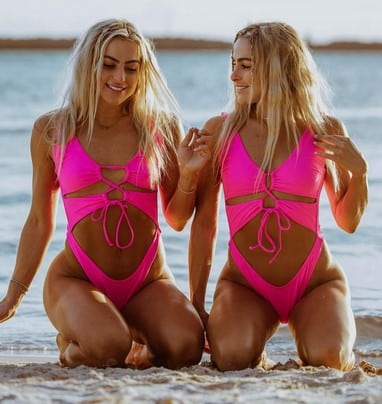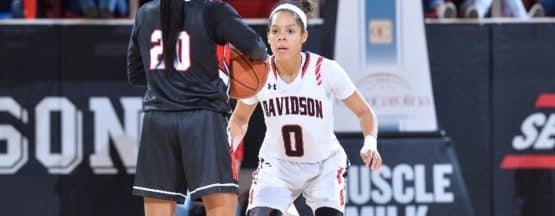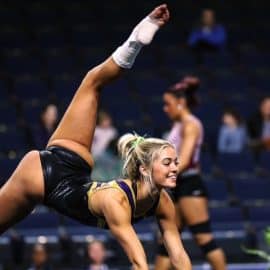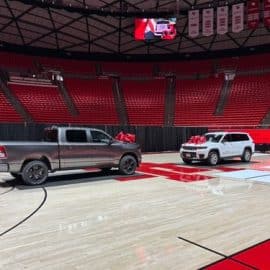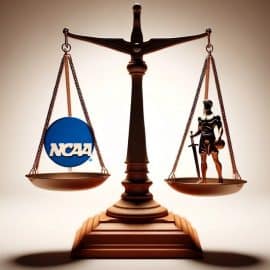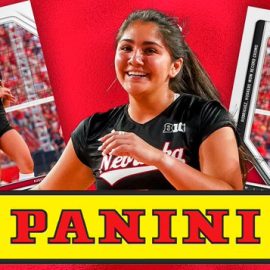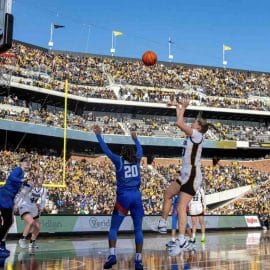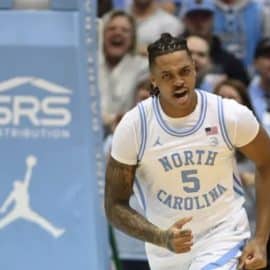The landscape of college sports is evolving, and with it, comes a new, controversial issue that has ignited heated debates and drawn the attention of the NCAA. This issue stems from the rise in opportunities for college athletes to monetize their name, image, and likeness (NIL). An unexpected challenge has surfaced from this evolution: the so-called “hot girls problem.” As female athletes seize these new NIL opportunities, a conversation has started on the significant influence of attractiveness on endorsement deals and social media presence. This article seeks to explore the intricate dynamics of this issue and the NCAA’s response.
The Rise of Influential Athletes
At the heart of this debate are figures like the Cavinder Twins, Haley and Hanna. They have created a brand of their own, building a following of millions across various platforms. As they transitioned from college basketball players to full-time influencers, they’ve found success that has continued beyond their college sports careers, moving on to new goals in the WWE.
EQUITY: The NCAA is frustrated that the best looking (not best playing) athletes are making millions. They call it their ‘hot girl problem’. Should attractive people be allowed to make more than unattractive people? Should earnings be divided equally?https://t.co/wXFGsJiVxl
— @amuse (@amuse) June 13, 2023
The twins’ financial success can be partially attributed to their physical attractiveness and the content they produce, which often includes bikini shots and elements appealing to male fantasies. However, they recognize and stress the importance of empowering women in a world often dominated by men, and they acknowledge the privilege tied to their physical appearance.
The discourse around NIL naturally leads us to the issue of equity. There is a growing concern about a noticeable disparity in NIL earnings. It has become evident that marketability and attractiveness, rather than athletic prowess, seem to be driving this discrepancy.
“I love fitness. I like to showcase my body in a way that makes me feel confident… Who are you to judge that?” Hanna Cavinder passionately defends their approach to content creation.
View this post on Instagram
The NCAA’s Standpoint
The NCAA finds itself on uncertain ground with the issue at hand. Historically, male college athletes, particularly those in high-profile sports, have enjoyed lucrative endorsement deals. However, the unexpected success of female athletes deemed attractive has drawn increased attention.
Critics argue that the NCAA’s response reflects bias against female athletes. Actions such as penalizing the University of Miami women’s basketball program for minor violations, while seemingly more serious improprieties in men’s sports are overlooked, have fueled these accusations.
The Market Bias and Its Implications
Both top male athletes, like Caleb Williams and Travis Hunter, and attractive female athletes, such as the Cavinder Twins and gymnast Olivia Dunne, have secured impressive NIL valuations.
View this post on Instagram
This market bias has faced criticism for its inherent unfairness. The bias in favor of those who conform to societal standards of beauty overlooks many athletes, regardless of their skill level or contribution to their sport. Additionally, the emphasis on sex appeal creates an uneven playing field where even accomplished athletes might struggle to secure sponsorships.
It’s not the success of attractive female athletes that’s the issue—athletes have always had the chance to monetize their fame. The concern arises when athletes who don’t fit this mold are overlooked. If a female athlete doesn’t leverage her attractiveness, she may find it challenging to secure NIL deals, even if she is a high performer in her sport.
A Clash of Perspectives
Tara VanDerveer, coach of Stanford’s women’s basketball team, has expressed concern over the “hot girls problem,” viewing it as a step backwards where appearances supersede athletic achievements.
There’s a generational clash at play here, between traditionalists like VanDerveer and new-age influencers like the Cavinder Twins. However, the Twins argue that their success empowers women, and criticizing their approach undermines progress made by female athletes.
The NCAA’s Dilemma
The NCAA is at a crossroads as debates on the “hot girls problem” continue. The organization has come under fire for its lack of comprehensive regulations on NIL deals and the monetization of athletes’ images.
NCAA President Charlie Baker has expressed support for federal legislation to regulate these deals, hinting at the need for clearer guidelines. The question of how to fairly manage athletes’ image rights, while navigating the interplay of sports, attractiveness, and commercialization, remains unanswered.
As college sports undergo a transformation in light of new NIL policies, the “hot girls problem” underscores the influence of attractiveness on endorsement deals and social media popularity. The journey ahead is filled with challenges and potential solutions that require careful consideration and balanced perspectives.
Comprehensive Betting Guides 2025
- Best Offshore Betting Sites – Compare Top Offshore Online Betting Sites.
- Best Bitcoin Betting Sites – Top-rated Bitcoin Sportsbooks in USA Ranked & Reviewed.
- Crypto Betting Guide – Discover the Best Crypto Betting Sites in USA.
- Cash Out Betting Guide – Compare Best Betting Sites with Cash Out Option.
- Best Sports Betting Apps – Discover Top US Mobile Betting Apps Ranked & Reviewed.
Add The Sports Daily to your Google News Feed!
